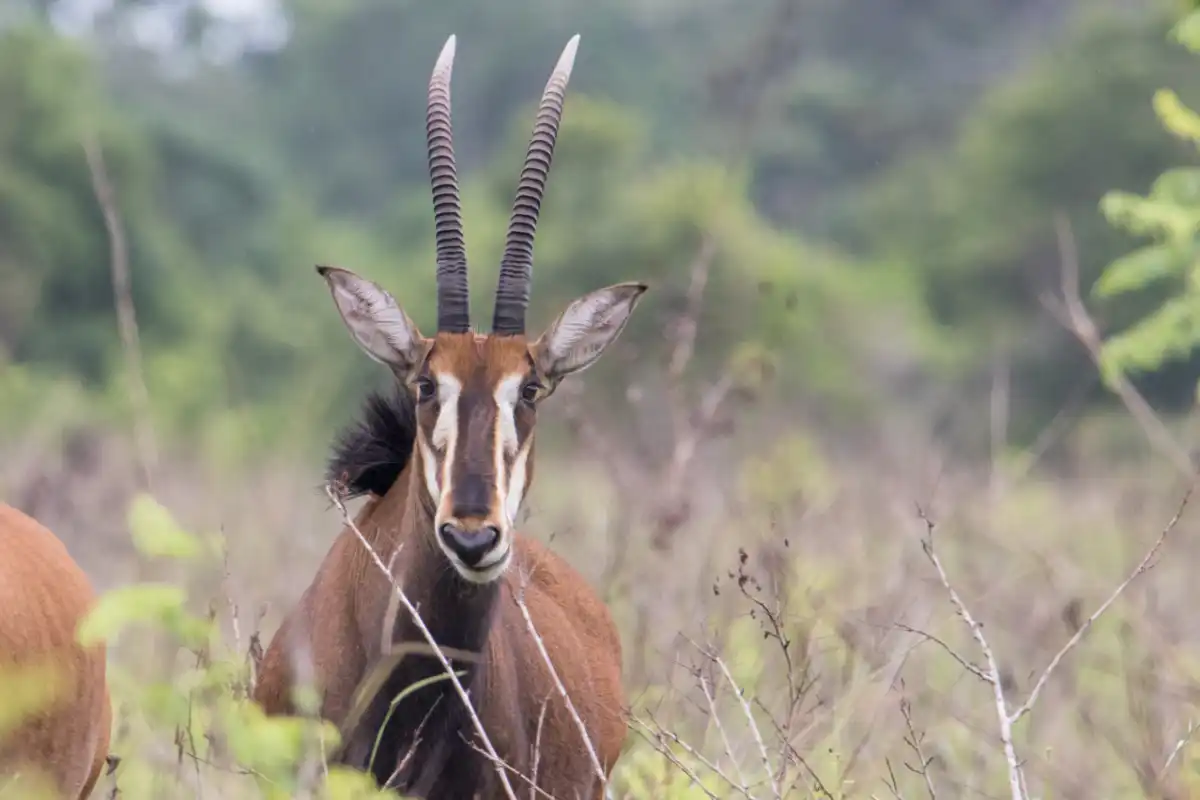Overview – Shimba Hills National Reserve
The Shimba Hills National Reserve is a small National Reserve in the former Coast Province of Kenya, 33 km from Mombasa and 15 km from the coast. As one of the largest coastal woodlands in East Africa after Arabuko-Sokoke Forest, this reserve is rich in flora and fauna and hosts the most highest density of African elephants in Kenya. The forest is a significant bird region and is supplied with backwoods birdlife while the prairies hold restricted species.
-
Wildlife10 Animals
-
High SeasonDecember to March and July to October
-
Best Time to GoJuly to September and January to February
Pros & Cons
- Rare coastal rainforest habitat
- Very less crowded, off-the-beaten-track destination
- Guided walks are available
- Good birding with forest specials
- Easy single day trip from Mombasa and beach resorts
- Very limited wildlife viewing options
- Only one option for accommodation available in the park
Shimba Hills National Reserve Map in Africa

Shimba Hills National Reserve Safari Reviews
Want to Visit Shimba Hills National Reserve?
Wildlife & Animals – Shimba Hills National Reserve
Shimba hills have plenty of wildlife viewing options which includes Endangered Sable Antelope, Elephants, Giraffes, Leopard, Genet, Civet cat, Hyenas, Waterbuck, Bushpig, Buffalo, African Bush Baby, Bushbuck, Blue Duiker, Bush Duiker, Red Duiker, Greater Galago, Serval cat and Knob-bristled Suni Shrew. Several primate species can be spotted including Coastal Black and white Colobus, Black-faced Vervet Monkey, Sykes Monkey and the yellow baboon.
Wildlife Highlights
Shimba Hills has an enormous population of elephants. There are estimated to be approximately 700 elephants in the reserve.
Park is a sanctuary for the endangered Roosevelt's sable antelope. Two other species of galago occur here: the small-eared galago (or lesser bushbaby) and the tiny Zanzibar galago.
Best Time for Wildlife Viewing
Shimba Hills can be visited throughout the year. However, wildlife viewing is best in the dry months from June to September and December to March. In the wet season, Visits are more difficult as vegetation is thicker, which makes animal spotting difficult, and the abundance of water means wildlife tends to be more scattered.
Want to Visit Shimba Hills National Reserve?
Birds – Shimba Hills National Reserve
The Shimba Hill national reserve is a great place for bird watching with both forest and open savannah grassland birds such as croaking cisticola,red-necked spurfowl and Zanzibar Red Bishop, Eastern violet-backed sunbird, Narina trogon, Mottled swift, Red-necked spurfowl, Spotted ground thrush, Green tinker bird, Golden palm weaver, Ulu guru violet-backed sunbird, yellow-throated longclaw, East coast akalat, Fischer’s turaco many more. There are around 200 bird species recorded in the park. You can still get an opportunity of sightseeing beautiful better flies around. The most scenic side of the reserve is Sheldrick Falls as well as the dense Mwaluganje forest.
Notable Birds in Shimba Hills National Reserve
Best Time for Bird Watching
Shimba Hills is a bird watcher's delight the entire year. Numerous unusual, dry-country specials live here and can be spotted all year. Migratory birds show up in the reserve from November to April. One significant thought is the climate, as substantial showers can wreck your birding plans – November and April get the most precipitation.
Want to Visit Shimba Hills National Reserve?
Best Time to Visit – Shimba Hills National Reserve
Shimba Hills can be visited throughout the year. However, wildlife viewing is best in the dry months from June to September and December to March. In the wet season, Visits are more difficult as vegetation is thicker, which makes animal spotting difficult, and the abundance of water means wildlife tends to be more scattered.
-
Best Time
July to September and January to February
-
High Season
December to March and July to October
-
Low Season
April to June
-
Best Weather
July to September and January to February
-
Worst Weather
April, May and November
December to March & June to September (Dry Season)
- Rarely gets hot, Most of the time it's sunny & dry
- Due to short grass and less water sources, Animals can be spotted easily
- The park never gets busy
- The sky is hazy and the scenery isn’t as pretty
- Resort hotels get very busy which can be used as a base
December to March & June to September (Wet Season)
- The scenery is beautiful and at its most lush with so many flowers
- Very few crowd
- Rain in April and May will sometimes come in between your planned activities
- Roads become sloppy and difficult to travel
- Animals are scattered and the vegetation is thicker, making them difficult to spot











































